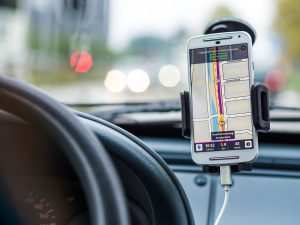In this modern age where technology has been a staple in everyday life, it’s impossible to imagine planning a vacation without the use of a computer. However, booking accommodations and flights online is actually a new invention. Consumers weren’t given autonomy when it comes to reservations until the introduction of smartphones. As a result, the rising use of online websites for travel agencies emerged.
According to statistics, 85% of frequent travelers heavily rely on their smartphones for booking accommodations, flights, and even dinner reservations. Out of this percentage, 52.5% admitted they would still use their mobiles to buy additional services and 61.4% would book for room upgrades using the same process. These numbers prove that e-commerce craft websites like these don’t only benefit the travel agencies, but also make everything accessible for vacationers.
dinner reservations. Out of this percentage, 52.5% admitted they would still use their mobiles to buy additional services and 61.4% would book for room upgrades using the same process. These numbers prove that e-commerce craft websites like these don’t only benefit the travel agencies, but also make everything accessible for vacationers.
Online Travel Agencies Make Traveling Easy
When you book with an online travel agency, there are a number of options you can choose from that can fit your schedule, budget, and personal preferences. You only need to specify your destination and the system will do all the work for you. This action can save you precious time since you only need to visit one website instead of making various phone calls and planning separate bookings. Not only that, but big travel websites are trusted, top business advisors in hospitality and tourism.
Online travel agencies also highlight the best bargains of the day. This means you don’t only get to choose your dream destination, but also chance upon the lowest discounts! Most of these online travel agencies have mobile apps that offer discounts once you download them on your smartphone. These apps also connect you to other destinations that are frequently traveled by other users to help you discover new places.
The most important advantage of online travel agencies, however, is that the web design they usually use allows for the convenience of being able to purchase your reservations anytime. Once you’ve made all the arrangements, you are given a choice to pay for it immediately or at a later date. This way, you can still consider your itinerary and make adjustments without any additional fees.
Online Travel Agencies Are Better Than Hotel Websites
While hotel websites can successfully feature all of the redeeming qualities of the property, they lack the engagement of a trust advisor like an in-store travel agent. Since the rising use of online websites for travel agencies, people have relied on online reviews from other consumers in booking for an accommodation. Word-of-mouth, albeit traditional, is still a more effective way of attracting clients than just plain description and pictures. And with all this technology, nothing speaks louder than positive reviews from other customers online!
The power of suggestion is overly underrated and always taken for granted. That is why online travel agencies have gradually taken speed in the competition for sales. With an online website, travel agencies can offer recommendations that are tailored to guide the consumer to the perfect itinerary. The website can analyze information from the users and create suggestions based on their specific preferences. This innovative ability not only shows that technology, equipped with human sensibilities, can make our way of living much easier.


 2. Know the risks of driving in distant places
2. Know the risks of driving in distant places 7. Mind the hills
7. Mind the hills